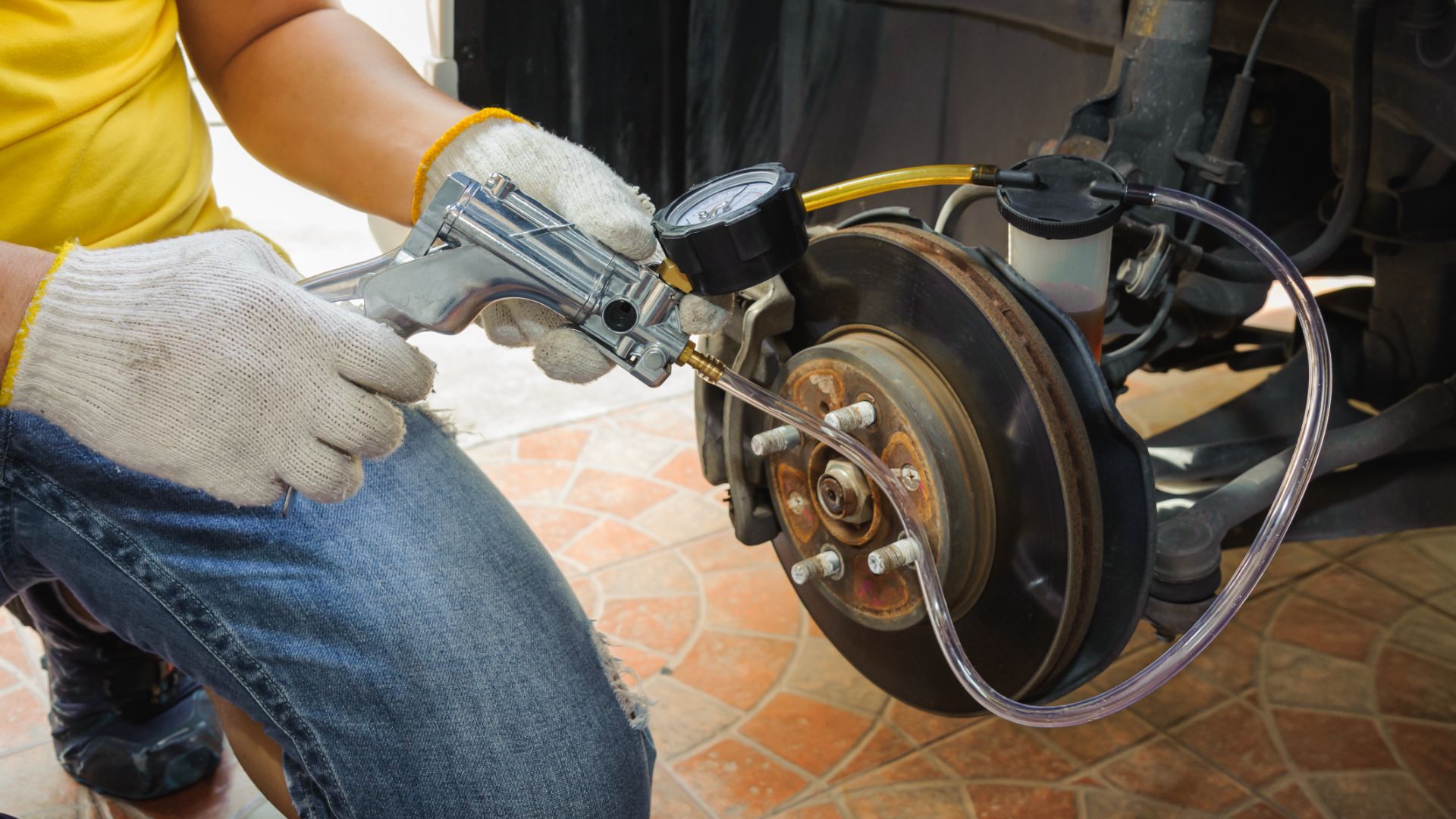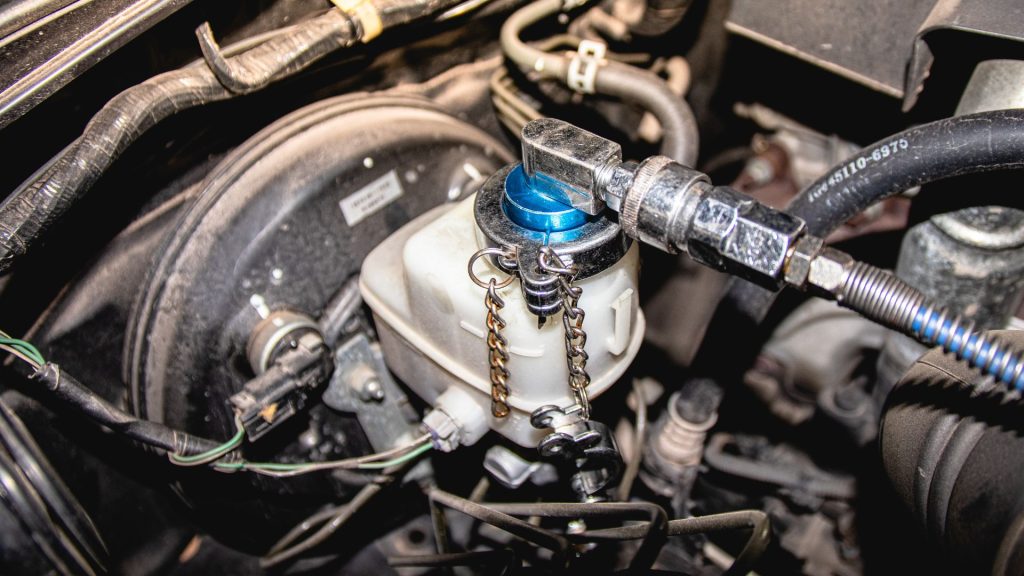Do you have to bleed brakes after changing pads?
Master the essential steps to bleed brakes after replacing brake pads.

Modern braking systems in cars are hydraulic, and this includes a brake fluid that pressures the pistons to push the brake pads against the rotors. For the system to work properly, it takes servicing the brakes and changing the fluid if the level drops.
Still, there’s one more major question to address – do you have to bleed brakes after changing pads? Yes, you have to bleed brakes after changing pads to remove air bubbles from the system. As mentioned, hydraulic brakes use brake fluid and it can’t build up proper pressure if the air bubbles get in the way. This guide will introduce you to the importance of brake bleeding, and how it’s all done.
Importance of brake bleeding
Brake bleeding is important to ensure your driving safety among other reasons. This is the most important one since air bubbles entering the system could make your braking distance longer. Other symptoms are much like when you get leak in the brake fluid system.
You’ll feel a spongy and responsive brake pedal, and the hydraulic pressure won’t be enough to enable proper braking performance. The most common situation where it’s required to bleed the brakes is replacing worn-out brake pads.
Especially if you drove with old pads until they completely wore off, it affects air bubbles to accumulate in the system. As your brake pads get close to worn off, it will take more hydraulic pressure to enable powerful braking. Because of it, more brake fluid is released from the master cylinder to pressure on brake pads and give you that braking power.
However, this also leaves the system vulnerable to air coming in, and another risky situation is just as the mechanic replaces the pads. So, it’s advisable to instantly bleed brakes as soon as you replace the old brake pads.
Difference between brake bleeding and flushing

Sometimes, drivers are confused by the terms flushing and bleeding the brakes, but these two aren’t the same actions. Bleeding requires just eliminating the air bubbles from the system by pumping a bit of new brake fluid into the system. It’s like a bit of air in brake fluid lines that result in bad brake boosters and lower braking performance.
On the other hand, flushing the brakes means completely replacing the old brake fluid with a new one. While you bleed the brakes in case air gets into the system, flushing is done in case of moisture forms in the system, or if the brakes overheat.
Braking aggressively too often can result in heat buildup that consumes more fluid, and it might even be a leak in the system if the fluid level significantly drops. In this case, you’ll need to find the leak source and service the brakes, while flushing them comes in the end.
Flushing ensures that you get a renewed brake fluid line to maximize the braking power and your safety while braking.
Types of brake bleeding procedures
If you just replaced your old brake pads for a new set, it’s a perfect time for brake bleeding. You should know that mechanics usually offer three different types of brake bleeding:
- Manual bleeding
- Pressure bleeding
- Vacuum bleeding
While it might be possible to bleed brakes yourself, it’s better to leave this job to professionals if you are not a car expert yourself. Especially if you bought expensive ceramic brake pads as replacements, you want the job done right.
Manual brake bleeding
Manual brake bleeding doesn’t require any special tools to do the job. The first step includes finding a “bleed valve” on your brake calipers. After finding it, it takes opening the valve to let the old brake fluid pour out of the caliper.
Besides the calipers, you’ll also need to bleed the master cylinder, and the procedure is quite similar. The master cylinder also has a bleed valve, and opening it will release the old fluid along with the air pockets that have formed.
Pressing the pedal also helps evacuate the old brake fluid by applying pressure to the brakes. That’s why most mechanics do this job with a partner, to press the brake pedal while extracting leftover fluid. The crucial step is to properly close the valve after placing the new fluid in the cylinder.
It needs to be carefully done to avoid creating new air bubbles in the system. Just before closing the valve after pouring in new fluid, it’s essential to step on the brake again to remove any excess air. The process is repeated several times for each caliper, and finally for the master cylinder to make sure there’s no more air in the system.
Pressure bleeding
Pressured bleeding can be more precise than manual, but your mechanic needs to have the proper equipment for it. The process starts the same since a mechanic will open the bleeding valve to let the old fluid out of the system.
However, this time the suction unit is attached to it, and the pressure bleeding machine pulls out the old fluid while pumping in new. The machine regulates brake fluid pressure as it directs new fluid through the system and finally seals the master cylinder.
A convenient thing about this method is that it uses a fitted cap to seal the cylinder, preventing excess air to be stuck in the system. This sometimes happens with manual bleeding, especially if you do the job yourself without the help of a professional.
Vacuum bleeding
Finally, there’s the vacuum bleeding process that requires the usage of a vacuum pump. The pump sucks out the old brake fluid and removes air bubbles that might have been created. On the other hand, it cleans the reservoir so you can add new brake fluid into it.
As the suction progresses, you’ll notice new fluid coming out, and the bleeding valve should be sealed at this point. Fluid from the reservoir should always be above the “Min” designation, so it takes an expert eye to seal the valve at just the right time.
Brake bleeding saves you from expensive repairs
Along with ensuring maximized hydraulic pressure in your brakes, the bleeding process also saves you from expensive repairs. For instance, bleeding also saves your ABS module which is an expensive part to replace.
This module suffers from excess air in the braking system and might malfunction because of it. Not only is it expensive to replace, but it’s also crucial for your driving safety. The module controls your car’s ABS by processing information from ABS sensors and increasing braking pressure if needed.
This action prevents your wheel to get locked up, so it’s the best option to simply bleed the brakes to avoid any potentially dangerous safety issues.
Our take
If you were bothered by the matter of “do you have to bleed brakes after changing brake pads”, now you know the answer to a common question. While some mechanics say it isn’t necessary on systems where you can replace brake pads without tampering with a fluid reservoir and brake lines, it saves you some trouble.
Bleeding the brakes will preserve your braking system parts and ensure that you have maximized braking pressure at your disposal for safe stopping.
What happens if you don’t bleed your brakes after changing them?
If you don’t bleed your brakes after changing them, you risk some air bubbles staying in the braking fluid lines which affect your safety. These air bubbles reduce the braking pressure, which elongates your stopping distance.
How much does it cost to get brakes bled?
It usually costs around $75 to $100 to get your brakes bled, but it also depends on the exact method that the mechanic uses. Pressure bleeding could be more expensive than manual bleeding.